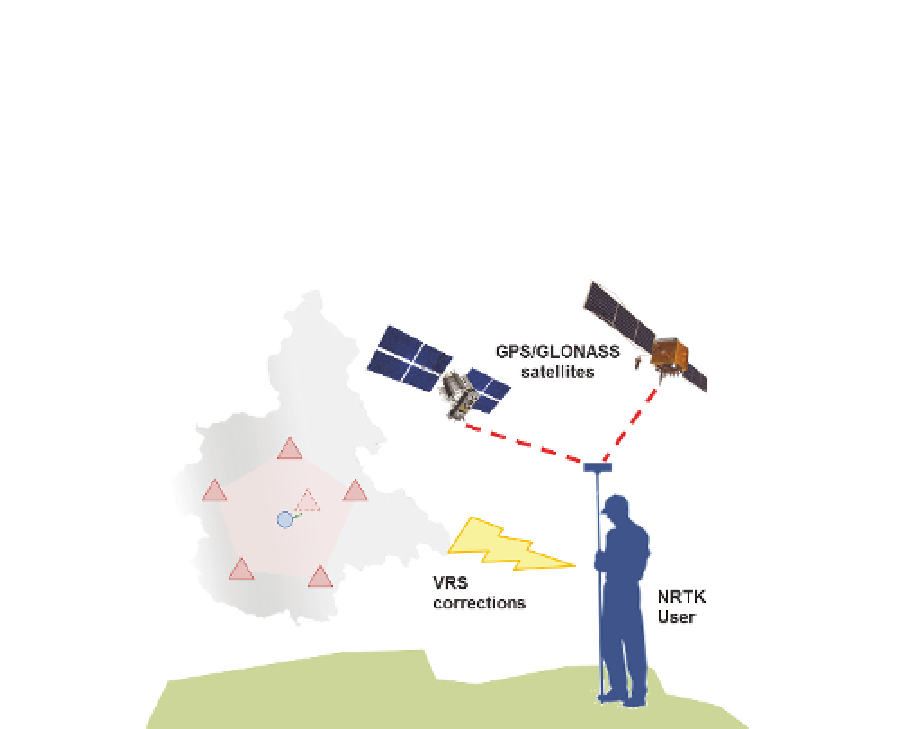Global Positioning System Reference
In-Depth Information
As mentioned before, the idea is to create a synthetic correction generated as if the reference
station is close to the rover. For this reason, the rover communicates its approximate
position (e.g. through an NMEA GGA message). Using this position, it is possible to
interpolate data following different strategies, e.g. using:
•
plane triangles (Vollath et al., 2000, Landau et al., 2002);
•
an Inverse Distance Weighting (IDW) estimation;
•
least squares method for estimating polynomial coefficients;
•
collocation (Raquet et al., 2001).
Fig. 1. The VRS positioning concept
This strategy can also be applied for post-processing positioning, by mean of a virtual data
file (usually, in RINEX format). This file contains the observations that a virtual reference
station may acquire in a well-known position selected by the network user.
As said above, the VRS positioning is the oldest network positioning strategy. Even if it has
some advantages and is widely applied, there are also some disadvantages. The VRS
method not allows, for example, a multi-base positioning (such as other methods) and it is
not always well-regulated and repeatable.
4.2 The FKP positioning
Another differential network strategy is to calculate the interpolative area parameters and to
broadcast them together with data from one reference station. This allows to have a one-way
communication system and to maintain a relatively low transmission load.
The idea was first used by Wübbena et al. (1996, 2002), who uses a flat to interpolate the
network biases in a given area. This positioning strategy was called FKP, which is the
acronym of the German sentence “Flächen Korrektur Parameter” (flat correction parameters,
in English).

Search WWH ::

Custom Search